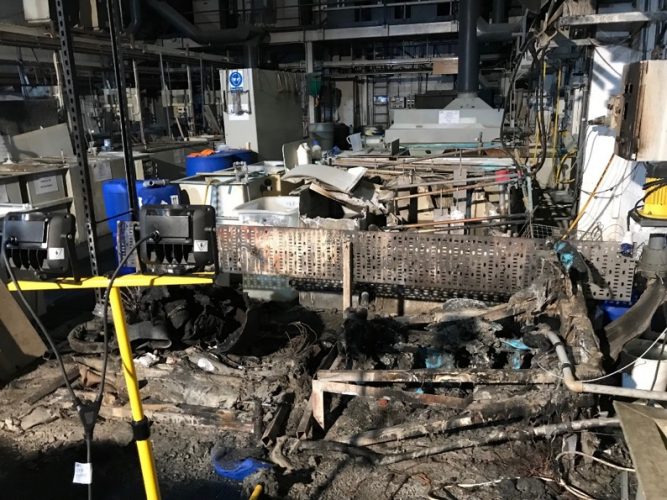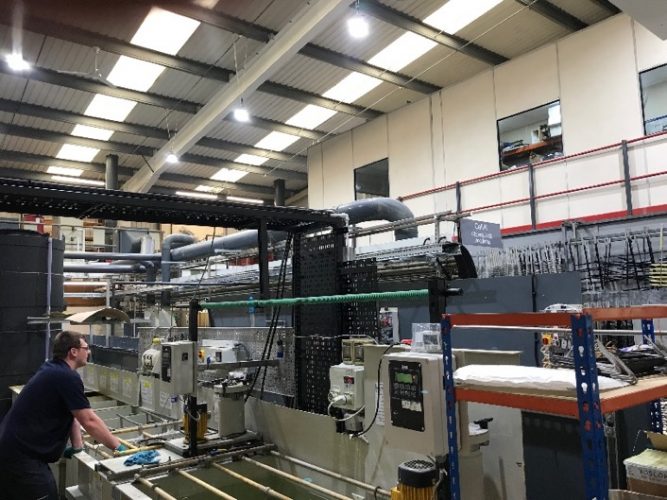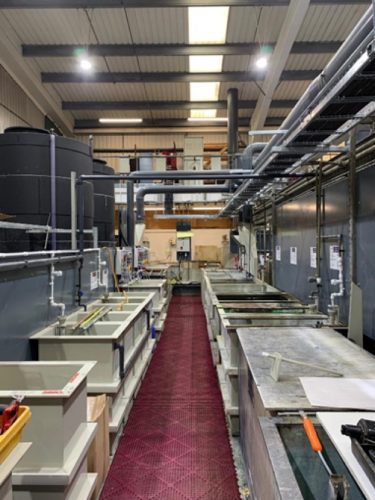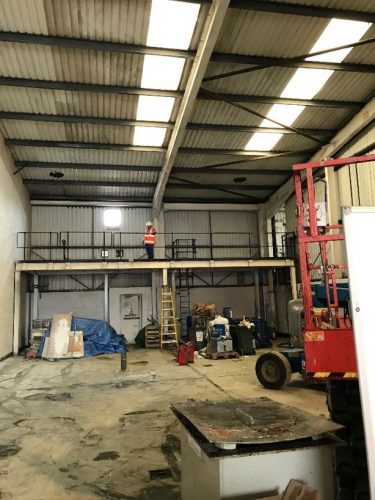Successfully negotiating claims since 1867
Fire at Specialist Aerospace Engineering Metal Treatment Company
A major national broker contacted Thompson & Bryan in January 2019 and asked us to attend an introductory meeting with one of its larger multi-national global group clients who had suffered a fire loss at one of their subsidiary companies.
The company involved, part of a leading global supplier of engineering solutions to the Aerospace, Automotive and Defence industries, had experienced a fire in which a critical part of their manufacturing process plant was damaged by fire, smoke and water.
Although the actual level of thermal damage at the premises was localised having been extinguished quickly, it soon became evident that a major and complex loss claim would ensue. The main production processes involved highly regulated accreditations such as Nadcap, AS9100 Rev-C and ISO-14001 with sensitive and time-critical components feeding into the manufacturing sector.

A wide range of customer markets and specialist parts requiring surface treatments to apply corrosion resistance and other surface coatings from small components such as nuts & bolts to heavy electrical transmission units and armoured vehicles were no longer capable of being processed due to the fire damage and resultant contamination.
As part of a re-broking exercise the previous year, the broker had negotiated for the inclusion of “Claims Preparation Costs” cover with a £50,000 limit ground up on all claims. This meant the policyholder could instruct their own team of advisors to assist and support them in the preparation of claims covering all aspects of their loss with the costs met in full without the need to incur substantial ‘after the event’ professional fees. Consequently, an official instruction was approved by insurers the same day enabling the client to appoint their own specialist claims team without delay to liaise with insurers own loss adjusters to deal with all aspects of the claim in a timely manner.
The exact cause of the fire was unclear, so insurers followed standard procedure by appointing their own firm of forensic investigators. To ensure their interests were protected and transparency of findings, the client also decided to appoint their own forensic expert and the two companies worked together collaboratively. It was quickly established that a heating element used to raise the temperature of chemistry within one of the metal treatment processing tanks had been accidentally left on the outside of the tank following a routine cleaning regime. The tank in question which was empty and in direct contact with the element, then caught fire as the element powered on when activated by a timer switch during the overnight period in anticipation of commencement of production the following day.
The fire was therefore established as fortuitous and policy liability accepted by insurers. At the same time the policyholders were able to adopt further risk improvement measures by way of additional emergency thermal cut-offs and safety alarms to enhance the existing processes to prevent a re-occurrence.

The production area was split into two distinct areas with a partition wall which had limited the ingress of smoke in between. It was therefore possible to carry out an emergency specialist decontamination of the lesser affected areas to salvage the majority of critical machinery and plant items to allow limited production to resume. However, the fire had destroyed one of the key metal treatment processes feeding all subsequent steps in the production workflow which meant that urgent orders had to be placed for replacement equipment, some of which had to be made to order with bespoke measurements.


Due to the strict re-accreditation criteria much of which is site specific, it was not possible to outsource production via the use of sub-contractors. A damage mitigation and business continuity plan was therefore put into action by the insured and the specialist claims teams which involved as much of the salvageable production equipment as possible being relocated into the lesser damaged unit, re-configured, services installed and put into use as part of a temporary interim setup while the rest of the factory was refurbished and replacement equipment sourced.
The services of a qualified project manager were also engaged to work alongside the company Directors on day-to-day issues to oversee all aspects of the project and accelerate the process wherever possible with his costs met in full by the policy. This plan successfully enabled production to resume to 50-70% of overall capacity within 3-6 months of the loss, while the necessary re-accreditations were put in place through a series of re-audits, therefore protecting customer orders and future trading relationships with all of the increased costs of working justified as economic. There was a need for some limited sub-contracting for a specific customer parts order, the costs of which far outweighed the likely loss of gross profit at risk when viewed in isolation. However, thankfully the existence of additional increased cost of working cover on the policy meant that this uneconomic expenditure could be quickly agreed and approved by the loss adjusters enabling the client to keep the customer happy and protect the relationship and service reputation with other much larger tier one customers further down the supply chain.
One of the other subsidiary companies also suffered knock on effects as a consequence of the incident and were required to source metal treatment services outside of the group elsewhere at an additional cost. Again, because the policy had been structured correctly and cover was written on a group basis with all group entities included and an interdependency extension, these increased costs of working were also covered in full.
In any major loss scenario, the adequacy of the overall sum insured and basis of cover comes under scrutiny in the early stages before a firm commitment can be reached by adjusters and insurers to meet the full extent of costs incurred. In this example the gross profit cover was on a group basis with one sum insured covering all 12 subsidiary companies on a floating basis with a breakdown between each supplied for underwriting purposes. Detailed analytical work involving profit & loss and turnover/cost of sales analysis was still required to demonstrate that the business in question which had suffered the loss had been adequately insured taking into account the insurable rate of gross profit, trends in the business and length of the maximum indemnity period. Again, thankfully the business interruption cover put in place by the client’s broker i.e. declaration based, twenty-four-month indemnity period and the inclusion of additional costs of working provided coverage was ideally tailored to meet the client’s specific requirements.
Without these features the business would undoubtedly have been at greater risk of exposure to some of the costs and/or losses arising from the fire.
The client continued to trade successfully albeit at reduced volumes until full production capacity could be resumed. They utilised the temporary interim arrangements and the loss of gross profit and increased costs of working incurred were all successfully covered and interim funding secured at regular intervals throughout the process. Rather than strip out the temporary equipment and production lines put in place the policyholder opted to retain much of the new layout and develop an alternative business plan utilising the space in a different way. In order to enable this to take place, suitable allowances were negotiated representing the residual value of these capital assets beyond the end of the interruption period and the reinstatement provision of the policy was utilised to allow the client to effect full reinstatement and create a layout to serve their future business needs in a manner suitable to their requirements.
Thompson & Bryan, October 2019